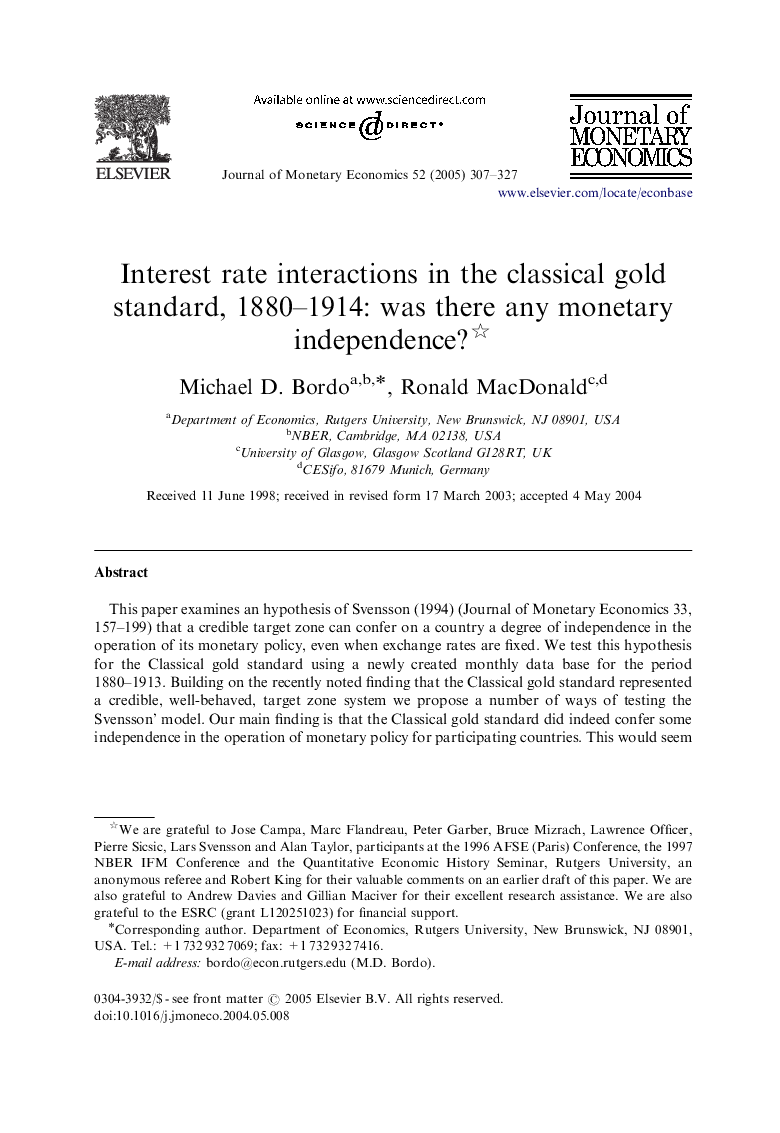| Article ID | Journal | Published Year | Pages | File Type |
|---|---|---|---|---|
| 10478493 | Journal of Monetary Economics | 2005 | 21 Pages |
Abstract
This paper examines an hypothesis of Svensson (1994) (Journal of Monetary Economics 33, 157-199) that a credible target zone can confer on a country a degree of independence in the operation of its monetary policy, even when exchange rates are fixed. We test this hypothesis for the Classical gold standard using a newly created monthly data base for the period 1880-1913. Building on the recently noted finding that the Classical gold standard represented a credible, well-behaved, target zone system we propose a number of ways of testing the Svensson' model. Our main finding is that the Classical gold standard did indeed confer some independence in the operation of monetary policy for participating countries. This would seem to have an important bearing on the kind of institutional framework required for a modern day target zone to function effectively and, in particular, to weather speculative attacks.
Related Topics
Social Sciences and Humanities
Economics, Econometrics and Finance
Economics and Econometrics
Authors
Michael D. Bordo, Ronald MacDonald,
